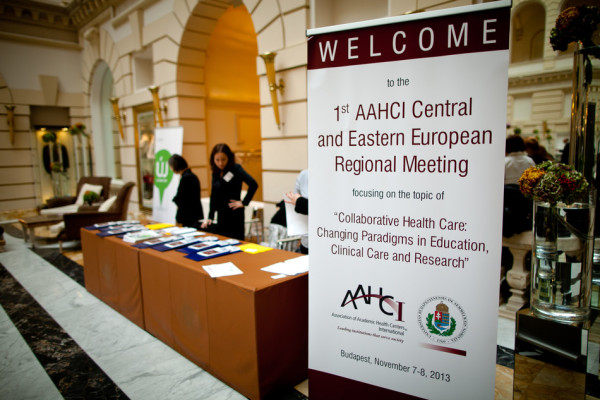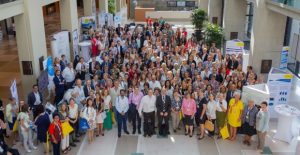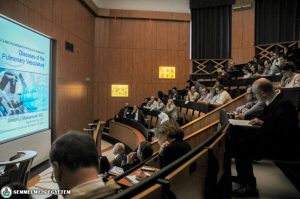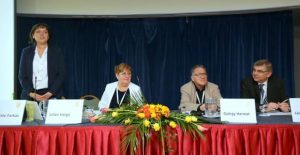The Association of Academic Health Centers International – which brings together academic health centres worldwide – held a meeting in the Central and Eastern European Region for the first time. Semmelweis University – who recently joined the Association – was the co-organiser of the conference which took place in Budapest over the course of two days on November 7-8.
In his opening speech Rector Ágoston Szél emphasised that a university needs both tradition and innovation since it cannot be successful without knowing its past or having a vision. He also reminded the audience that 244 years before on that very day (November 7) decided Maria Theresa to extend the University of Nagyszombat with a Faculty of Medicine, thus starting the history of Semmelweis University.
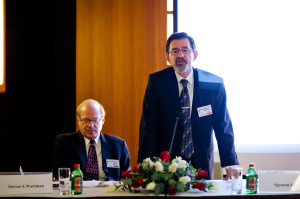 Rector Szél also pointed out that Universities’ and academic health centres’ main triadic function is to ensure education, research and patient care – in this order. However, it is not enough to simply carry out these tasks simultaneously within the framework of the institution. The collaboration of different fields and the sharing of good practices are sorely needed. According to Rector Szél one of the key questions is “How can we use these synergies to make sure that all three areas become more successful together and separately as well?”
Rector Szél also pointed out that Universities’ and academic health centres’ main triadic function is to ensure education, research and patient care – in this order. However, it is not enough to simply carry out these tasks simultaneously within the framework of the institution. The collaboration of different fields and the sharing of good practices are sorely needed. According to Rector Szél one of the key questions is “How can we use these synergies to make sure that all three areas become more successful together and separately as well?”
Professor Ágoston Szél also noted that it is imperative not to forget that university-level education is inconceivable without research when strategies are formed. In relation to research he also touched upon the fact that today small research groups of 2 or 3 researchers have an increasingly difficult task to receive larger grants even if they publish successful research articles. This field also requires collaboration. Cooperation and collaborative thinking are not only required within institutions but also between institutions. No matter how deep an institution’s roots are or how ambitious its vision is, it cannot hope to succeed on its own. In connection to interinstitutional cooperation the Rector mentioned Semmelweis University’s joint programmes with Asklepios Campus Hamburg and Lugano as examples. At the end of his opening speech the Rector quoted Sir Francis Bacon – according to who knowledge is power – and Anton Chekhov who said that knowledge is only useful if it is put into practice.
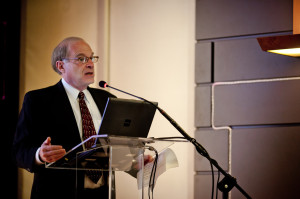 Dr. Steven A. Wartman, president of the Association of Academic Health Centers emphasised in his opening speech that both the programme of the 1st Central and Eastern European Meeting and the participating institutions showed great diversity. More than 20 countries were represented from Canada to China, from Latvia to Mexico. The participants represented different cultures and historical backgrounds, different languages, different economic and health care systems, but they have one thing in common: they wish to develop in order to advance general health and well-being. They do this through their academic activities which include the education of health care professionals, research and patient care. These three fields of activities support and improve one another.
Dr. Steven A. Wartman, president of the Association of Academic Health Centers emphasised in his opening speech that both the programme of the 1st Central and Eastern European Meeting and the participating institutions showed great diversity. More than 20 countries were represented from Canada to China, from Latvia to Mexico. The participants represented different cultures and historical backgrounds, different languages, different economic and health care systems, but they have one thing in common: they wish to develop in order to advance general health and well-being. They do this through their academic activities which include the education of health care professionals, research and patient care. These three fields of activities support and improve one another.
He emphasised that the AAHCI was formed in 2008 as the extension of the AAHC and it is the only international organisation that brings together academic health centres in order to promote collaboration.
Dr. Harold Paz – who is the chair-elect of the AAHC Board of Directors and CEO of the Penn State Milton S. Hershey Medical Center and Health System – presented the concept of academic health centres through the example of Penn State University’s Hershey Medical Center. He underlined that among their five strategic imperatives are extraordinary patient care, innovation through research and integrated academic healthcare system. Their institutions work cooperatively in a strong integrated system which not only provides an edge to the university, but also to those who provide the service and to the hospitals since they can take advantage of the scientific endeavours of the university and of the assistance of the different faculties.
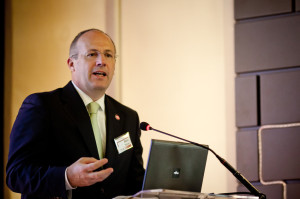 Dr. Miklós Szócska, Hungary’s minister of state for health also gave a speech and – among others things – he mentioned that what is needed is a health care system which puts greater emphasis on outpatient care and prevention and which allows for the stronger cooperation of the different actors and levels. The academic service providers have a fundamental role in the creation and dissemination of knowledge and new information thus they have to take a leading role in the achievement of these objectives as well. Local hospitals and academic institutions have to collaborate; the academic knowledge centres have to share the accumulated knowledge also with the peripheral institutions. He highlighted that even during the financial crisis we have to invest in innovation which in turn improves service provision.
Dr. Miklós Szócska, Hungary’s minister of state for health also gave a speech and – among others things – he mentioned that what is needed is a health care system which puts greater emphasis on outpatient care and prevention and which allows for the stronger cooperation of the different actors and levels. The academic service providers have a fundamental role in the creation and dissemination of knowledge and new information thus they have to take a leading role in the achievement of these objectives as well. Local hospitals and academic institutions have to collaborate; the academic knowledge centres have to share the accumulated knowledge also with the peripheral institutions. He highlighted that even during the financial crisis we have to invest in innovation which in turn improves service provision.
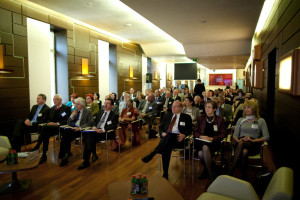 The conference’s title was Collaborative Health Care: Changing Paradigms in Education, Clinical Care and Research. Regarding paradigm change Prof. Mária Judit Molnár, Semmelweis University’s vice-rector for scientific affairs told us that the development of informatics, information technologies and molecular biology would lead us to a completely new type of health care. Classic health care is reactive: the patient goes to the doctor with existing symptoms, whereas the paradigm change will introduce a health care that is proactive; in other words a health care where the prediction and prevention of diseases are of crucial importance. The development of information technologies will introduce numerous changes in education as well and the paradigm change will transform research in a way that the research ambitions will be defined next to the sickbeds which will constitute the points of departure for basic researchers.
The conference’s title was Collaborative Health Care: Changing Paradigms in Education, Clinical Care and Research. Regarding paradigm change Prof. Mária Judit Molnár, Semmelweis University’s vice-rector for scientific affairs told us that the development of informatics, information technologies and molecular biology would lead us to a completely new type of health care. Classic health care is reactive: the patient goes to the doctor with existing symptoms, whereas the paradigm change will introduce a health care that is proactive; in other words a health care where the prediction and prevention of diseases are of crucial importance. The development of information technologies will introduce numerous changes in education as well and the paradigm change will transform research in a way that the research ambitions will be defined next to the sickbeds which will constitute the points of departure for basic researchers.
Pálma Dobozi
Translated by: Bonifac Makkai
